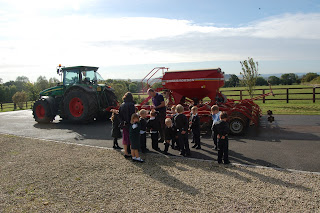 I thought that I would just take a quick moment to update you on how the various stewardship options have progressed over the dry summer. On the whole most seemed to have coped very well although some species have rather taken over! This first wild bird seed mixture is the Norlands field and was planted with feeding Tree Sparrows through the winter months. The plants include the wonderful Quinoa whose magnificent autumn colours look a real picture at this time of year. They will produce a vast amount of small seeds from Christmas onwards.
I thought that I would just take a quick moment to update you on how the various stewardship options have progressed over the dry summer. On the whole most seemed to have coped very well although some species have rather taken over! This first wild bird seed mixture is the Norlands field and was planted with feeding Tree Sparrows through the winter months. The plants include the wonderful Quinoa whose magnificent autumn colours look a real picture at this time of year. They will produce a vast amount of small seeds from Christmas onwards.In this field we have planted a pollen and nectar strip next to a winter bird seed mixture aimed at providing nesting cover and food for corn buntings. The mustard that we planted seems to have overtaken the rest of the seed mix which includes, spring barley, triticale and white millet. Next year I think I will reduce the mixture from 10 to 5%, although who knows in a different spring 10% might have been the right amount.
This is one of my favourite stewardship margins and one that has already produced a real bounty of winter food. Both of these mixtures were planted before we entered the Higher Level Stewardship and last year the bird food mix fed lots of small birds, including yellow hammers, dunocks and linnets through the winter period. What I love about this combination of pollen and nectar and wild bird food is the way that it caters for our farmland wildlife completely. It provides winter food for adult bird survival, pollen and nectar for insects to live on which then become chick feed and there are nesting sites in the tussocky grass margins and hedge bottom on the right hand side. It will be fascinating to watch these sights develop over time and hopefully reap the benefits for our farmland wildlife.



